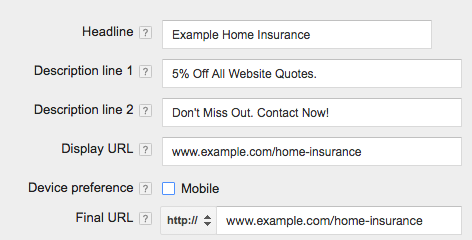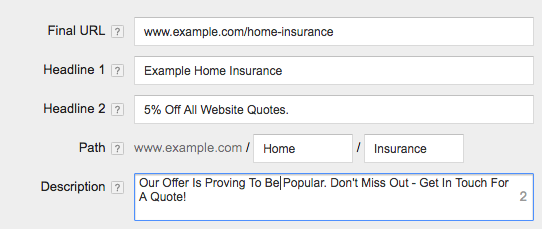
Get weekly
HubSpot updates
With the year coming to an end, it got me thinking about how much has happened within the digital marketing field in 2016. Us marketers witnessed a huge number of changes and updates, whether that be in social media platforms or even Google itself. As much as it is tempting to explore all those updates in my post, I would like to focus on Google AdWords in particular.
Here are the updates we witnessed:
Device Bidding
In June AdWords introduced a change to enhanced campaigns that allowed marketers to set base bids for any device and set bid adjustments for the rest. This update was welcomed with open arms as it gave advertisers more control over device-level bidding and allowed marketers to invest in devices according to their return.
Bid adjustments can be set at campaign or ad group level for devices. You can read more about it here.
Google Maps Local Search Ads
Designed to help businesses be more visible and accessible — especially when consumers are searching for physical stores, restaurants or cafes — this function includes Promoted Pins (including brand logos), customisable business pages and in-store promotions. A very handy function particularly for those on the road with limited time on their hands and who require information straight away.
It maintains the right balance of being helpful to consumers by providing them with correct and relevant information, while not being too obtrusive.
Even though the function was initially introduced in 2013, it was improved upon in 2016. You can read more about it here.
Expanded Text Ads
Something else that PPC marketers were gifted with in 2016 after years of feedback. Previously marketers only had the option of standard text ads, which had limited character space to promote their offerings. For example, the ‘Headline’ field has a 25 character limit and ‘Description line 1’ and 2 have a 35 character limit:

This has changed and now provides marketers with the option of increasing the character limit through choosing expanded text ads in the back-end of AdWords. This change presents a 30 character limit for ‘Headline 1’ and 2, and an 80 character limit for the description.

It is helpful to remember that, although expanded text ads has been introduced, standard text ads are still available.
Recently, I wrote an article on how to make the most out of expanded text ads, which you can read here.
New Responsive Display Ads
Google released Responsive Ad format for Display Network campaigns, which was considered an attractive alternative to text ads. It has the ability to automatically reformat ads to fit different placements and ad sizes. The responsive ads also allow advertisers to provide a logo and image that will appear in native ad formats as well as rich media ads.
Due to it’s flexibility in being able to automatically adjust its size and layout to fit any available ad space, responsive ads can potentially reach a larger audience. You can read more about it here.
Store visit tracking
With the consumer purchase journey being more complex than ever, and made even more complicated to track due to the mixture of offline and online marketing efforts, Google wanted to create a way in which businesses could understand how much in-store foot traffic their location-based PPC ads were driving. While the function was introduced back in 2014, only a handful of businesses had access to this powerful tool. However, now Google has made it available to more businesses.
As much as the tool is very insightful, there is a caveat: your ads must receive at least 1,000 clicks. You can read more about it here .
